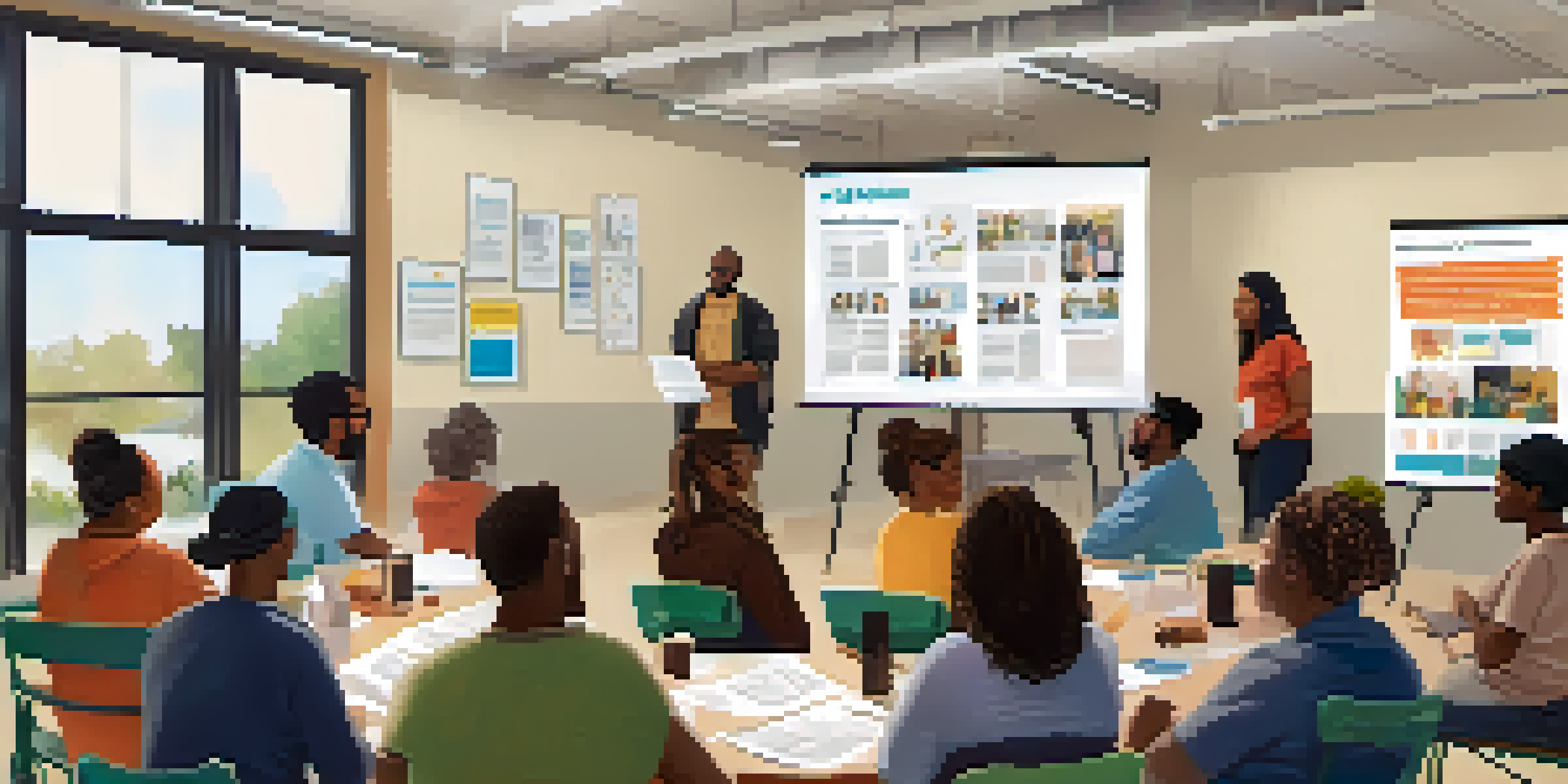Proactive Bystander Intervention: Strategies for Safety

Understanding Proactive Bystander Intervention
Proactive bystander intervention is about taking action when witnessing potential harm or unsafe situations. It shifts the mindset from 'someone else will handle it' to 'I can make a difference.' By understanding this concept, individuals learn the importance of their role in creating safer environments for everyone.
Inaction breeds doubt and fear. Action breeds confidence and courage.
The core principle is that everyone has the power to intervene, regardless of their relationship to the situation or the people involved. This means that whether you're a friend, a stranger, or an observer, your attentiveness and willingness to act can significantly impact someone’s safety.
By fostering a culture of proactive intervention, communities can empower individuals to speak up against bullying, harassment, and other harmful behaviors. This collective effort nurtures not just safety but also a sense of accountability and support among community members.
Recognizing Warning Signs of Unsafe Situations
Identifying warning signs is crucial for effective intervention. These signs can be verbal, such as aggressive language or threats, or physical, like someone being pushed or isolated. Being aware of these indicators can help bystanders assess when intervention is necessary.

Emotional cues also play a significant role. If someone appears visibly distressed or uncomfortable, it could indicate that they need support. Paying attention to body language and facial expressions can provide important context about the situation.
Proactive Bystander Intervention
Taking action in unsafe situations empowers individuals to create safer environments.
By honing the ability to recognize these signs, bystanders can respond more confidently and swiftly. This awareness can make the difference between a harmful incident escalating and someone receiving the help they need in a timely manner.
Effective Strategies for Intervention
There are several effective strategies for intervening in unsafe situations. One common approach is the 'direct intervention,' where a bystander addresses the situation head-on. This can involve confronting the aggressor or directly checking in with the person in distress to see if they need help.
The only thing necessary for the triumph of evil is for good men to do nothing.
Another strategy is 'distraction,' which can be a subtle yet powerful way to intervene. By creating a diversion, such as asking for directions or making a joke, you can shift the focus away from the harmful behavior without escalating the situation.
Lastly, 'delegation' is a strategy where a bystander seeks assistance from others, such as friends or security personnel. This approach ensures that the situation is handled safely, especially if the bystander feels uncomfortable intervening alone.
Building Confidence Through Training
Many individuals may hesitate to intervene due to fear or uncertainty about how to act. By participating in training programs focused on bystander intervention, people can build their confidence and learn practical techniques for responding to various situations. These programs often include role-playing scenarios that help participants practice their skills in a safe environment.
Training sessions typically cover the psychological barriers to intervention, such as the bystander effect, which suggests that individuals are less likely to offer help when others are present. Understanding this phenomenon can empower participants to push past their hesitations and take action.
Recognizing Warning Signs
Identifying verbal and emotional cues is essential for effective bystander intervention.
Not only does training equip individuals with essential skills, but it also fosters a supportive community mindset. When more people are trained, the collective confidence in intervening grows, leading to safer spaces for everyone.
Fostering a Culture of Support and Responsibility
Creating a culture that encourages bystander intervention starts with open communication and shared values. When communities actively promote safety and support, individuals are more likely to feel responsible for each other's well-being. This can be achieved through workshops, discussions, or community events focused on the importance of intervention.
Sharing stories of successful interventions can also inspire others to take action. When people hear about instances where bystanders made a positive difference, it reinforces the idea that everyone can contribute to safety in their community.
Ultimately, fostering this culture not only strengthens community bonds but also reduces the likelihood of harmful incidents. When individuals feel empowered and supported, they are more likely to step up when it matters most.
The Role of Technology in Bystander Intervention
In today's digital age, technology can play a pivotal role in bystander intervention. Social media platforms can be used to raise awareness about unsafe behaviors, share resources, and create supportive online communities. By leveraging these tools, individuals can connect with others who share their commitment to safety.
Additionally, apps designed for reporting harassment or unsafe situations can empower bystanders to act discreetly. These tools provide a way to reach authorities or support services without putting oneself in a potentially dangerous position.
Building Confidence Through Training
Training programs enhance skills and confidence, encouraging more individuals to intervene.
While technology offers new avenues for intervention, it’s essential to remember that it should complement, not replace, direct action when safe to do so. The human element of support and empathy remains critical in ensuring the safety of those in need.
Encouraging Open Dialogue About Safety
Encouraging open dialogue about safety helps to normalize the conversation around bystander intervention. When communities engage in discussions about safety concerns, it allows individuals to express their feelings and experiences, fostering a sense of collective responsibility. This dialogue can occur in schools, workplaces, or community centers and should be inclusive and supportive.
By facilitating conversations, communities can identify specific issues that need to be addressed. Whether it’s bullying, harassment, or violence, understanding the unique challenges faced can lead to tailored solutions. Moreover, it allows for the sharing of strategies that have worked in the past, creating a repository of knowledge for future interventions.

Ultimately, open dialogue not only raises awareness but also builds trust among community members. When people feel heard and understood, they are more likely to participate in safety initiatives and intervene when necessary.